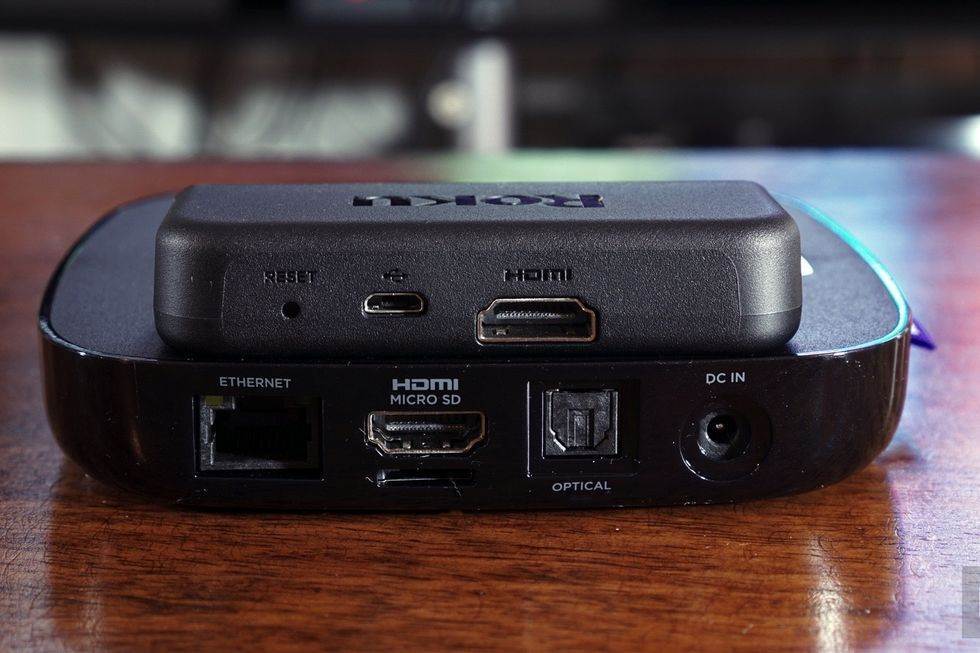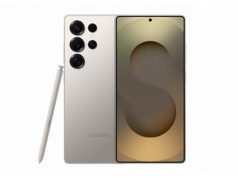Few tech companies are as reliable as Roku. Every year, like clockwork, it releasess a new round of streaming video boxes, each a bit faster and better than what came before. There’s the occasional welcome surprise, like the $50 Roku Stick that debuted earlier this year, but for the most part the company’s strategy has focused on incremental improvements, not dramatic ones. Roku’s latest batch of players mostly fit that mold, but they’re notable for two things: reaching a low $30 price point with the Express, and delivering a $100 player that supports 4K and HDR.
That would be enough for a killer lineup, but there’s also a flagship model with more bells and whistles: the $130 Ultra. After spending time with both the cheapest and priciest new Roku players, I was surprised to find myself more intrigued by the possibilities of a $30 player than a high-end powerhouse.
Gallery: Roku Express and Ultra | 7 Photos

-

-

-

-
 +3
+3
Engadget Score
Pros
- It’s only $30!
- 1080p content looks great
- Small and easy to set up
Cons
- A bit slow
- IR remote can be inconvenient
- Interface is dated
Summary
The Roku Express is a streaming marvel thanks to its low price. If you can live with some speed issues, it’s perfect for bringing streaming video to screens all over your house.
Engadget Score
Pros
- Incredibly fast
- 4K/HDR content looks fantastic
- Speedy networking
Cons
- Not much more capable than Roku’s $100 player
- Roku’s interface is dated
Summary
The Roku Ultra is the company’s fastest streaming player yet, and it throws in just about every feature you can imagine. The only major downside is that Roku’s $100 Premiere+ includes most of the capabilities you’d actually need.
Hardware
Let’s start with the Roku Express, which looks nothing like any of the company’s other players. It’s as if someone took one of Roku’s typical designs, shrunk it down and then chopped it in half. It’s pretty small, resembling a stack of USB sticks stuck together. Notably, though, it’s not nearly as small as the more expensive Roku Stick.
If I had to use one word to describe the Express, it would be “functional.” It’s not attractive or much of a centerpiece device; instead it’s something you’d just stick in front of your TV and forget about. Its singular purpose is to get you 1080p HD streams at the lowest price possible. The Express has an HDMI socket on the back and is powered through a mini-USB port. And yes, it can easily be powered by the typical USB connections you’d find on a TV, if you want to avoid connecting it to an AC adapter.

If you’re looking for old-school RCA video connections, which were typically the main selling point of Roku’s low-end gear, you’ll have to consider the $40 Express+. It’s pretty much the same as the Express performance-wise, except it adds those older connections.
The Roku Ultra, on the other hand, looks like a covert military weapon next to the toy-like Express. It’s basically a dead ringer for the Roku 4 — and most of the company’s relatively recent players, for that matter. On top of the usual HDMI connector, it also features an SD card slot and an Ethernet jack. Notably, it’s also the only Roku device this year to include an optical audio port (which is useful if you’re stuck with a sounder that doesn’t take HDMI audio) and a USB port for local storage. And if you’re particularly adept at losing your remote, you can also hit the button on top of the Ultra to locate it.
If the name wasn’t enough of a hint, the Roku 4 is basically made for true power users. It supports 4K and HDR, but strangely enough, it’s not the only player this year to do so. The $100 Roku Premiere+ also offers both of those features, making it a potentially better choice if you have no need for USB and optical audio.

As usual, Roku isn’t giving us much information about the components powering its devices. The company claims the Express is faster than the $50 Roku 1 it’s replacing, and that the Ultra uses a “fast” quad-core processor (but so do the cheaper Premiere and Premiere+). And you can forget about any other technical details, like RAM or onboard storage. Ultimately, what you need to know is that both the Express and the Ultra offer a performance boost over what came before.
When it comes to remotes, the Express features Roku’s most basic offering yet. It has the company’s typical button layout — a four-way directional pad, playback controls and shortcuts for Netflix, Hulu, Sling TV and Google Play. It also relies on infrared to communicate with the Express, so you’ll have to point it at the box whenever you want to control it. The Ultra, on the other hand, includes the company’s full-featured wireless remote with voice search. Its layout is mostly the same, except it has a shortcut to Showtime (really?) instead of Google Play, and it includes two extra buttons for games. And of course, the Ultra’s remote also has a headphone jack, something that Roku diehards are particularly fond of.
Software

If you’ve seen any of Roku’s previous players, there aren’t many surprises with its latest OS. It sports the same black and purple aesthetic, with a heavy focus on lists for the main menu. The company’s big innovations last year were the addition of voice search and the ability to follow actors and movie titles. Unfortunately, there aren’t any major software upgrades for these players yet.
I have the feeling I’m beginning to sound like a broken record for criticizing Roku’s archaic interface design — just go back and look at my reviews of the Stick and Roku 4. But, quite honestly, it’s still worth pointing out. Apple, Amazon and even TV manufacturers like Samsung and LG have made tremendous strides with their streaming interface designs over the past few years. I can understand if Roku doesn’t want to rock the boat too much for its fans, but a little effort would be nice. The company’s mobile app, for example, got a spiffy redesign last year that makes it much easier to use. So what’s the holdup for Roku’s core OS?
At the very least, you probably won’t be staring at Roku’s dull UI for too long. App developers like Netflix and Hulu can make attractive software for Roku’s platform. And while they don’t reach the level of what we’re seeing on the Apple TV, they’re still more visually arresting than Roku’s menus.
In use

Getting started with both players is relatively simple. Just plug them into a power source, hook up an HDMI cable and you’re good to go. After choosing a WiFi network, you just have to sit back and wait for the players to download apps (since I’ve been testing these players for a while, they automatically downloaded around 50 apps during setup). Not surprisingly, the Roku Express took a bit longer to get going, since it’s restricted to slower 2.4GHz WiFi networks. The Ultra, thanks to its speedier processor and support for 802.11ac/5GHz networks, was able to go through the initial setup…







